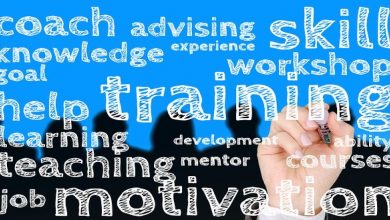Constructivism Learning Theory
An important restriction of education is that trainers cannot simply transmit knowledge to learners, but learners need to actively construct knowledge in their own minds.

Introduction:
One of the key factors in training is to be able to transfer knowledge and values in a learning process that has a kind of impact on the group of trainees. Doing training without thinking about the impact that this can have on the group of participants and how it is the best way to transfer the knowledge in a content that has the sense and the sense to be learned.
Content:
Learners discover and transform information, check new information against old, and revise rules when they do no longer apply. This constructivist view of learning considers the learner as an active agent in the process of knowledge acquisition.
Constructivist conceptions of learning have their historical roots in the work of D wey (1929), Bruner (1961), Vygotsky (1962), and Piaget (1980). Bednar, Cunningham, Duffy, and Perry (1992) and von Glasersfeld (1995) have proposed several implications of constructivist theory for instructional developers stressing that learning outcomes should focus on the knowledge construction process and that learning goals should be determined from authentic tasks with specific objectives.
Similarly, von Glasersfeld (1995) states that learning is not a stimulus-response phenomenon, but a process that requires self-regulation and the development of conceptual structures through reflection and abstraction. It is important to note, in this respect, that constructivism is embodied in numerous ways and that these different views share important overlaps, but also contain major differences.
The theory suggests that humans construct knowledge and meaning from their experiences. Constructivism is not a specific pedagogy. Piaget’s theory of Constructivist learning has had a wide-ranging impact on learning theories and teaching methods in education and is an underlying theme of many education reform movements. Research support for constructivist teaching techniques has been mixed, with some research supporting these techniques and other research contradicting those results.
Constructivism’s central idea is that human learning is constructed, that learners build new knowledge upon the foundation of previous learning.
Two important notions orbit around the simple idea of constructed knowledge.
- The first is that learners construct new understandings using what they already know.
- The second notion is that learning is active rather than passive. Learners confront their understanding in light of what they encounter in the new learning situation.
Implications of constructivism for teaching and learning:
Central to the tenet of constructivism is that learning is an active process. Information may be imposed, but understanding cannot be, for it must come from within. Constructivism requires a teacher/trainer to act as a facilitator whose m in function is to help students/learners become active participants in their learning and make meaningful connections between prior knowledge, new knowledge,and the processes involved in learning.
Constructivist teacher/trainer is someone who will:
- encourage and accept student autonomy and initiative;
- use a wide variety of materials, including raw data, primary sources, and interactive materials and encourage students/learners to use them;
- inquire about students/learners‟ understandings of concepts before sharing his/her own understanding of those concepts; encourage students to engage in dialogue with the teacher and with one another;
- encourage student inquiry by asking thoughtful, open-ended questions and encourage students/learners to ask questions to each other and seek elaboration of students‟ initial responses;
- engage students/learners in experiences that show contradictions to initial understandings and then encourage discussion;
- provide time for students/learners to construct relationships and create metaphors;
- assess students/learners‟ understanding through application and performance of open-structured tasks.
If we are going to transfer their reflections to the field of non-formal education, we can see that a trainer should be able to apply the practices mentioned above in their learning setting.
Exercises:
How to apply it in everyday work]
Identify in your last thee training courses, the most successful methodology that you have applied.
Now reply to the following questions:
- Why did you choose that methodology?
- Which knowledge did you want to transfer?
- How did you run the session/methodology?
- Why do you think that was successful?
- Which skills did you use to design it?
Reflection Questions:
- How much do you know background theories about transferring learning?
- How do you link the learning and experience in your activities?
- Do you valorize the knowledge of learners and in which way?
- Which skills are you improving in the last two years of training?





